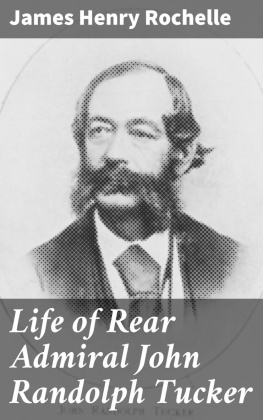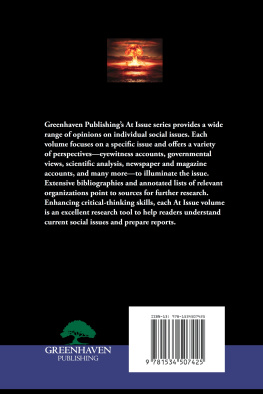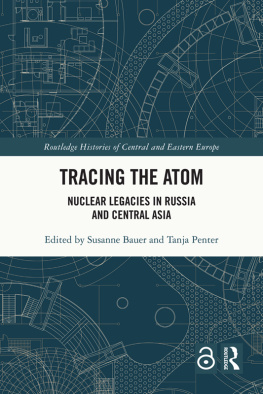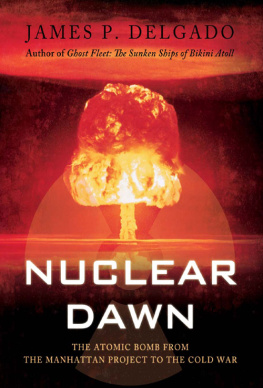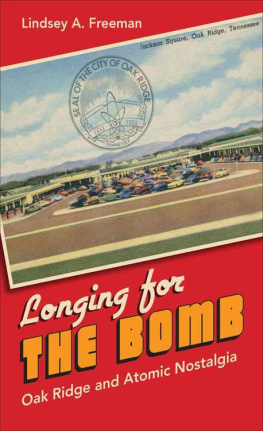Todd Tucker - Atomic America: How a Deadly Explosion and a Feared Admiral Changed the Course of Nuclear History
Here you can read online Todd Tucker - Atomic America: How a Deadly Explosion and a Feared Admiral Changed the Course of Nuclear History full text of the book (entire story) in english for free. Download pdf and epub, get meaning, cover and reviews about this ebook. year: 2009, publisher: Simon and Schuster, genre: History. Description of the work, (preface) as well as reviews are available. Best literature library LitArk.com created for fans of good reading and offers a wide selection of genres:
Romance novel
Science fiction
Adventure
Detective
Science
History
Home and family
Prose
Art
Politics
Computer
Non-fiction
Religion
Business
Children
Humor
Choose a favorite category and find really read worthwhile books. Enjoy immersion in the world of imagination, feel the emotions of the characters or learn something new for yourself, make an fascinating discovery.
- Book:Atomic America: How a Deadly Explosion and a Feared Admiral Changed the Course of Nuclear History
- Author:
- Publisher:Simon and Schuster
- Genre:
- Year:2009
- Rating:5 / 5
- Favourites:Add to favourites
- Your mark:
- 100
- 1
- 2
- 3
- 4
- 5
Atomic America: How a Deadly Explosion and a Feared Admiral Changed the Course of Nuclear History: summary, description and annotation
We offer to read an annotation, description, summary or preface (depends on what the author of the book "Atomic America: How a Deadly Explosion and a Feared Admiral Changed the Course of Nuclear History" wrote himself). If you haven't found the necessary information about the book — write in the comments, we will try to find it.
Todd Tucker: author's other books
Who wrote Atomic America: How a Deadly Explosion and a Feared Admiral Changed the Course of Nuclear History? Find out the surname, the name of the author of the book and a list of all author's works by series.
Atomic America: How a Deadly Explosion and a Feared Admiral Changed the Course of Nuclear History — read online for free the complete book (whole text) full work
Below is the text of the book, divided by pages. System saving the place of the last page read, allows you to conveniently read the book "Atomic America: How a Deadly Explosion and a Feared Admiral Changed the Course of Nuclear History" online for free, without having to search again every time where you left off. Put a bookmark, and you can go to the page where you finished reading at any time.
Font size:
Interval:
Bookmark:

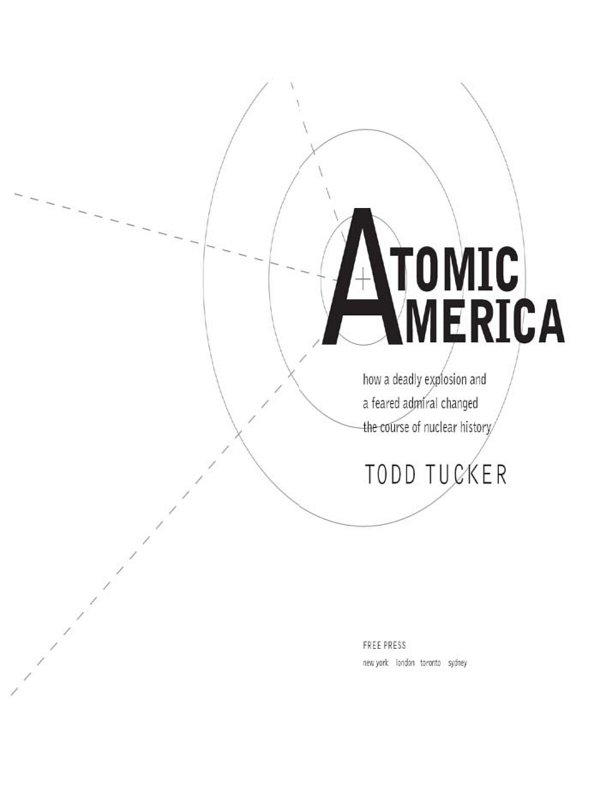

FREE PRESS
A Division of Simon & Schuster, Inc.
1230 Avenue of the Americas
New York, NY 10020
Copyright 2009 by Todd Tucker
All rights reserved, including the right to reproduce this book or
portions thereof in any form whatsoever. For information
address Free Press Subsidiary Rights Department,
1230 Avenue of the Americas, New York, NY 10020
FREE PRESS and colophon are trademarks of Simon & Schuster, Inc.
Library of Congress Cataloging-in-Publication Data
Tucker, Todd
Atomic America: how a deadly explosion and a feared admiral changed
the course of nuclear history / by Todd Tucker.1st Free Press hardcover ed.
p. cm.
Includes bibliographical references.
1. Nuclear reactor accidentsIdahoIdaho FallsHistory20th century.
2. Nuclear IndustryMilitary aspectsUnited StatesHistory20th century.
3. Idaho Falls (Idaho)History20th century. I. Title.
TK1345.I2T83 2009
363.17'990979653dc22 2008013842
ISBN-13: 978-1-4391-5828-9
ISBN-10: 1-4391-5828-2
Visit us on the World Wide Web:
http://www.SimonSays.com
Dedicated to
John Byrnes, Richard Legg, and Richard McKinley
Supercritical: The status of a reactor that has proceeded past the just-critical point, generating one new fission per previous fission. The added fissions increase exponentially, power going up in the same proportion. If not contained with control rods, the reactor will run away.
Nuclear Flight: The United States Air Force Programs for Atomic Jets, Missiles, and Rockets , Lieutenant Colonel Kenneth F. Gantz, USAF, editor, 1960
JANUARY 3, 1961
A moment before his death, John Byrnes knelt atop the Armys SL-1 reactor, poised to pull the central control rod straight up. His supervisor, Richard Legg, was nearby. The third crewman, Richard McKinley, was pacing around the vessel head, between the movable shield blocks and the motor control panel. As the newest member of the cadre, just three weeks into his hitch in Idaho, McKinley was probably running tools and trying to learn what he could between errands. He must also have observed the simmering tension between his two crewmates.
Legg and Byrnes had arrived in Idaho together, in October 1959, and had clashed since those first days. They had even come to drunken blows at a sleazy bachelor party the year before. But Legg had since surpassed Byrnes professionally and qualified as both chief operator and shift supervisorthis was Byrness first shift as Leggs subordinate. Byrness steady record of disciplinary problems all but guaranteed that his professional progress in the Army was over. Byrnes hated Legg.
The desolation surrounding them would have reinforced a dark mood, a landscape where even the place-names evoked solitude and despair. The Lost River Desert, the Snake River Plain, and the Craters of the Moon were all places the drafty government buses drove them through on their daily hundred-mile round-trip to the reactor. Much of the ground was covered in ancient black lava so hard and so thick that site engineers had trouble blasting through it even with shaped charges of dynamite as they busily erected experimental reactors up and down the plain. And January 3 was bitterly coldthe overnight low in Idaho Falls was six degrees below zero. Over the decades as the story was retold, many would recall it being even colder.
The reactor that Byrnes, McKinley, and Legg worked on was unglamorous and unloved even inside the fences of the National Reactor Testing Station in Idaho. The Navy reactors, in contrast, run by the brilliant and tyrannical Admiral Hyman Rickover, were the pride of the base. Just three years earlier, Rickover had stunned the world when the nuclear-powered USS Nautilus had steamed under the North Pole. It was the stuff of Jules Verne, a development that promised to change the nature of warfare: a submarine that could stay submerged forever. The prototype for that reactor, S1-W, operated in a giant tank of water to simulate the submarine environment, just ten miles northwest of SL-1 but worlds away in terms of prestige and excitement. On the northern end of the sprawling Idaho reservation, jealous Air Force generals played catch-up, pouring hundreds of millions of dollars into a nuclear-powered jet airplane, a giant bomber that would stay aloft for years, if they could ever get the behemoth off the ground.
The Armys goal for nuclear power was vastly more prosaic: small, semiportable power stations for remote bases. Of the more than twenty reactors in Idaho, SL-1 was the smallest, designed merely to generate 200 kilowatts of electricity.
Professional disappointment was just one of many reasons the volatile Jack Byrnes might have been distracted that cold night. He was probably exhausted, having slept on friends couches the previous two nights, as the latest fight between him and wife, Arlene Byrnes, ran its course. The fight had come at the end of their too-short holiday break, and Byrnes had returned to SL-1 to find a long list of maintenance he was supposed to complete under Leggs supervision, a list that ended with the start-up of the troublesome little reactor. Five hours into the watch, they had barely completed anything.
At 7:00 PM , Arlene had called SL-1 and told Jack that she wanted a divorce. After a year of fighting and loneliness in the Lost River Desert, Arlene Byrnes had finally had enough. Their last conversation ended with a discussion of how to split his paltry Army paycheck.
So at 9:00, it may have been difficult for Byrnes to focus on the task at hand. The procedure for reassembling the control rod drive mechanism called for lifting the rod not more than four inches. Byrnes was no nuclear engineer, but he was a well-trained Army specialisthe knew that the central rod in SL-1, by virtue of its position in the core, was enormously powerful, capable of starting up the reactor all by itself. If having his hands on that rod wasnt nerve-wracking enough, Byrnes might also have been uneasy to have Legg hovering so closely behind him. Self-conscious about his height at five foot six inches, Legg was constantly physically asserting himself, challenging any and all to wrestling matches and goosing his comrades at inappropriate times. Hunched over the control rod, straining with effort, Byrnes would have made a tempting target for one of Leggs pranks. And Byrness task would not have been easy, even without Legg looming behind him. The rod was heavy: eighty-four pounds. Whats more, the boron strips inside the core were crumbling, occasionally jamming the control rods in their channels and making them almost impossible to move, a problem that had gotten worse in recent months. Sometimes even the drive motors couldnt move the rods, and old-fashioned Army ingenuity would be applied to the problem, usually in the form of a pipe wrench.
At 9:00 PM , three hours remained in the shift, three hours that must have stretched out like an eternity before Jack Byrnes. There were many things that might have been running through his exhausted mindperhaps even the terse warnings of the procedure he was about to perform. Despite four decades of speculation, however, no one will ever know exactly what he was thinking at the moment he tightened his hands around the rod, and pulled.
At 9:01 PM , January 3, 1961, a nuclear reactor exploded in Idaho, killing three men who now lie buried in lead-lined caskets. It remains the only fatal reactor accident in American history.
Font size:
Interval:
Bookmark:
Similar books «Atomic America: How a Deadly Explosion and a Feared Admiral Changed the Course of Nuclear History»
Look at similar books to Atomic America: How a Deadly Explosion and a Feared Admiral Changed the Course of Nuclear History. We have selected literature similar in name and meaning in the hope of providing readers with more options to find new, interesting, not yet read works.
Discussion, reviews of the book Atomic America: How a Deadly Explosion and a Feared Admiral Changed the Course of Nuclear History and just readers' own opinions. Leave your comments, write what you think about the work, its meaning or the main characters. Specify what exactly you liked and what you didn't like, and why you think so.



